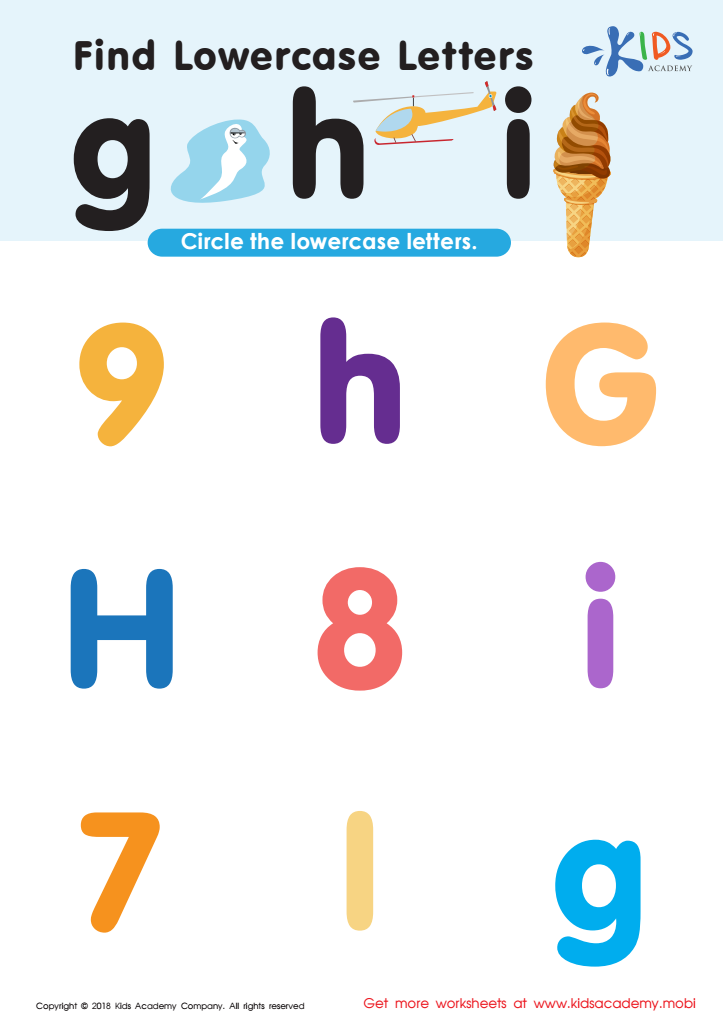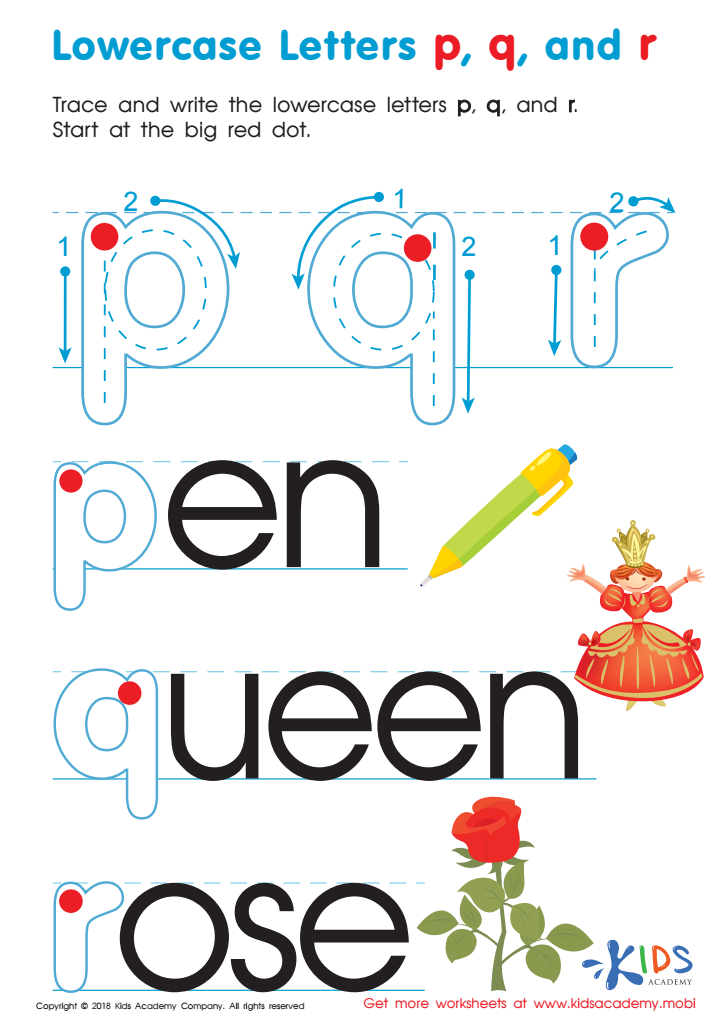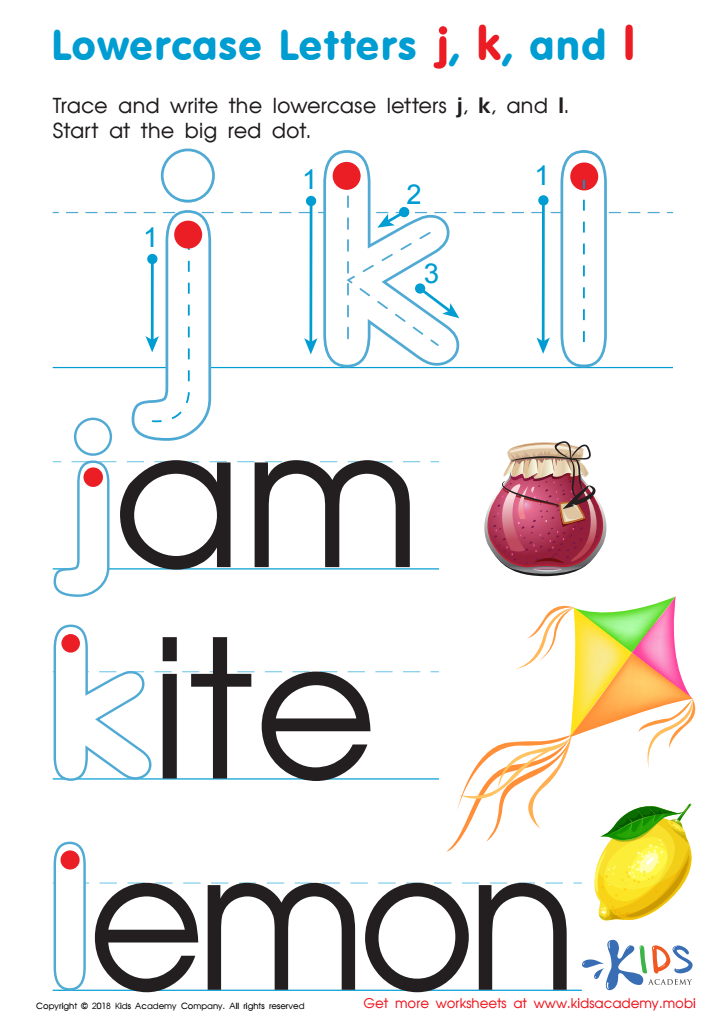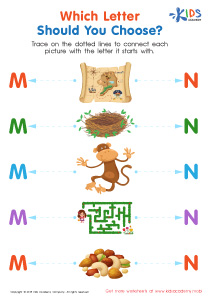Alphabet sequencing Lowercase/Small Letters Worksheets for Ages 4-5
3 filtered results
-
From - To
Welcome to our engaging Alphabet Sequencing Worksheets for lowercase letters, designed specifically for children aged 4-5. These fun and interactive printable worksheets help young learners enhance their literacy skills by practicing the order of the alphabet with small letters. Each activity focuses on recognizing and sequencing lowercase letters, fostering familiarity and confidence in early reading. Perfect for at-home learning or classroom activities, our worksheets encourage hands-on learning through colorful illustrations and easy-to-follow instructions. Help your child build a strong foundation in literacy with our carefully crafted resources that make learning the alphabet enjoyable and effective!


Find Lowercase Letters g h i Worksheet


Lowercase Letters p q r Worksheet


Lowercase Letters j k l Worksheet
Alphabet sequencing, particularly lowercase letters, is crucial for children aged 4-5 as it forms the foundation for their literacy skills. At this age, children are rapidly developing their cognitive abilities, and their exposure to the alphabet helps enhance recognition, pronunciation, and the understanding of sounds and letters in words.
Learning lowercase letters is vital because most reading and writing experiences involve these forms. Children will encounter lowercase letters in books, signs, and everyday communication. By familiarizing themselves with the correct sequence, they can better engage with texts, improving their skills in reading and vocabulary acquisition.
Moreover, mastering the sequence aids in developing fine motor skills necessary for writing. As they learn to sequence letters, children also begin to understand concepts such as alphabetical order, which is essential for organizing information, engaging with dictionaries, and other educational tools later on.
Engaging parents in this process fosters a support system that encourages learning through games, storytelling, and practical activities. Overall, paying attention to the sequencing of lowercase letters is essential for establishing early reading skills, improving literacy, and ensuring a positive attitude toward learning as children progress in their educational journey.
 Assign to My Students
Assign to My Students














